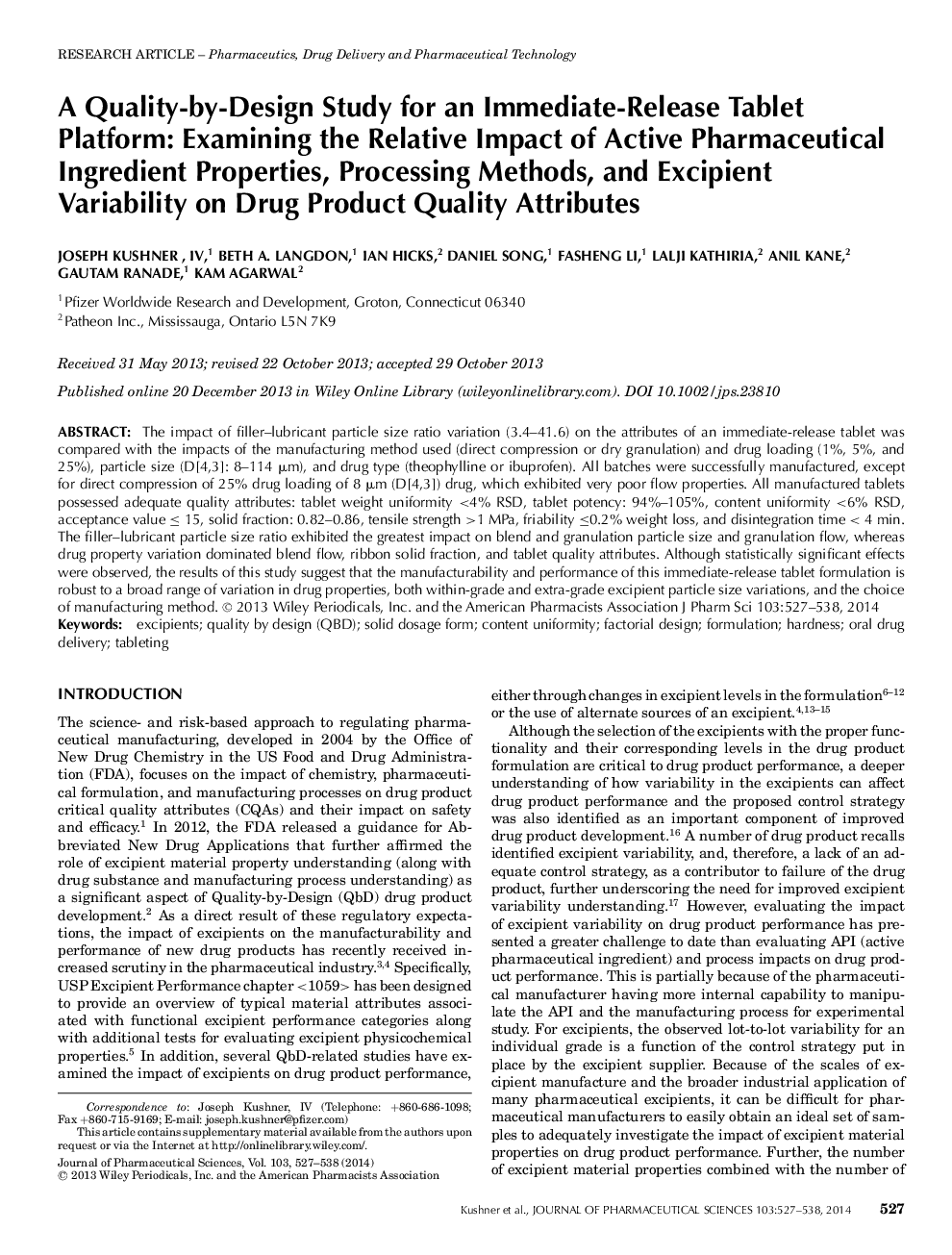| Article ID | Journal | Published Year | Pages | File Type |
|---|---|---|---|---|
| 10162599 | Journal of Pharmaceutical Sciences | 2014 | 12 Pages |
Abstract
The impact of filler-lubricant particle size ratio variation (3.4-41.6) on the attributes of an immediate-release tablet was compared with the impacts of the manufacturing method used (direct compression or dry granulation) and drug loading (1%, 5%, and 25%), particle size (D[4,3]: 8-114 μm), and drug type (theophylline or ibuprofen). All batches were successfully manufactured, except for direct compression of 25% drug loading of 8 μm (D[4,3]) drug, which exhibited very poor flow properties. All manufactured tablets possessed adequate quality attributes: tablet weight uniformity <4% RSD, tablet potency: 94%-105%, content uniformity <6% RSD, acceptance value ⤠15, solid fraction: 0.82-0.86, tensile strength >1 MPa, friability â¤0.2% weight loss, and disintegration time < 4 min. The filler-lubricant particle size ratio exhibited the greatest impact on blend and granulation particle size and granulation flow, whereas drug property variation dominated blend flow, ribbon solid fraction, and tablet quality attributes. Although statistically significant effects were observed, the results of this study suggest that the manufacturability and performance of this immediate-release tablet formulation is robust to a broad range of variation in drug properties, both within-grade and extra-grade excipient particle size variations, and the choice of manufacturing method. © 2013 Wiley Periodicals, Inc. and the American Pharmacists Association J Pharm Sci 103:527-538, 2014
Keywords
Related Topics
Health Sciences
Pharmacology, Toxicology and Pharmaceutical Science
Drug Discovery
Authors
Joseph IV, Beth A. Langdon, Ian Hicks, Daniel Song, Fasheng Li, Lalji Kathiria, Anil Kane, Gautam Ranade, Kam Agarwal,
